Max Munn Autrey (1891-1971) was an American photographer who worked in Hollywood during the 1920s and 1930s. He portrayed many of the Fox stars. Autrey was also the uncredited still photographer on such Hollywood classics as 7th Heaven (Frank Borzage, 1927), Sunrise (Friedrich Wilhelm Murnau, 1927) and Modern Times (Charles Chaplin, 1936).

Victor McLaglen. French postcard by J.R.P.R., Paris, no. 332. Photo: Max Munn Autrey / Fox. Publicity still for What Price Glory? (Raoul Walsh, 1926).
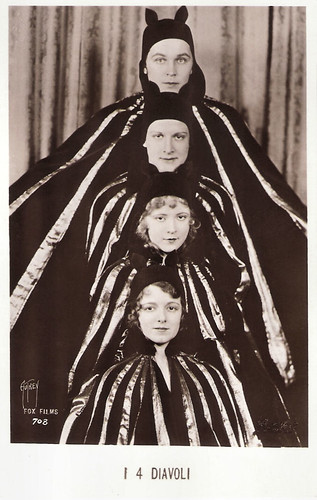
Janet Gaynor, Nancy Drexel, Barry Norton and Charles Morton in 4 Devils (1928). Italian postcard by G.B. Falci Editore, Milano, no. 708. Photo: Max Munn Autrey / Fox. Publicity still for 4 Devils (Friedrich Wilhelm Murnau, 1928).

Greta Nissen. German postcard by Ross Verlag, no. 3081/1, 1928-1929. Photo: Max Munn Autrey / Fox.
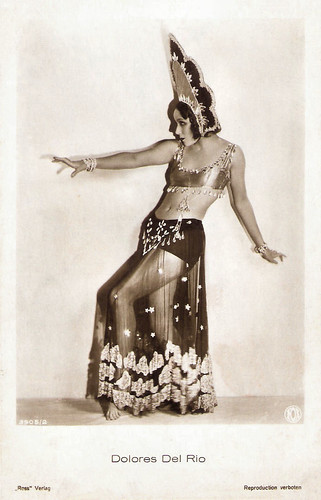
Dolores del Rio in The Red Dance (1928). German postcard by Ross Verlag, no. 3905/2, 1928-1929. Photo: Max Munn Autrey / Fox. Publicity still for The Red Dance (Raoul Walsh, 1928). Del Rio is wearing a kokoshnik (Russian: коко́шник; IPA: [kɐˈkoʂnʲɪk]), a traditional Russian head-dress worn by women and girls.
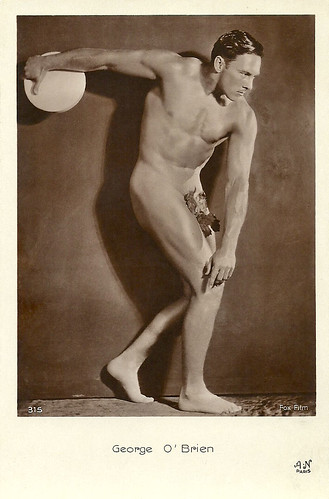
George O'Brien. French postcard by A.N., Paris, no. 315. Photo: Max Munn Autrey / Fox Film. Collection: Didier Hanson.
Max Munn Autrey was born in 1891 in Dallas, Texas, USA.
He was trained as a painter, but as an adult, Autrey moved around the state taking photographs. He was employed by P.T. Collier & Son in Dallas, per his World War I registration papers.
In 1918, he married his wife, Bonnie, in her hometown of Tyler. They lived in Burleson in 1920, but soon decided to move to California.
In 1922, the great Hollywood photographer Albert Witzel needed a steady hand to help produce the many portraits turned out by his studio, occasioned by the departure of his head photographer Walter Frederick Seely to establish his own studio.
Autrey’s artistry impressed the portraitist, renowned for producing high-quality, striking images. Autrey found his niche in portraiture, helping devise mystique and sensuousness in star portraits. Clients loved the lush look of his portraits and seated compositions.
Industry enthusiasm for Autrey’s work was so great that Witzel established a branch studio in Hollywood, run by Autrey from 1922 to 1925. Pictures and Picture Goer called Autrey “a master photographer” in an August 1925 article, stating that he produced most of the Witzel Studios portraits and earned that position only two months after joining the studio.
The Fox Film Corporation quickly seized upon Autrey and his talents, signing him to an exclusive contract late in the year. His first assignment as a still photographer for Fox was the drama Hell's Four Hundred (John Griffith Wray, 1926) starring Margaret Livingston.
Soon followed more prestigious assignments like What Price Glory? (Raoul Walsh, 1926), 7th Heaven (Frank Borzage, 1927) with Charles Farrell and Janet Gaynor, and Street Angel (Frank Borzage, 1928). Autrey became noted for his glamorous style.
For director Friedrich Wilhelm Murnau he did the stills for Sunrise (Friedrich Wilhelm Murnau, 1927) starring George O'Brien and Janet Gaynor, and the lost masterpiece Four Devils (1928). Later followed Dressed to Kill (1928) with Mary Astor.
Autrey portrayed many film stars. He photographed Madge Bellamy coyly poised on tiptoe for The Play Girl (Arthur Rosson, 1928) and portrayed Dolores del Rio as an exotic Russian dancer for The Red Dance (Raoul Walsh, 1928).
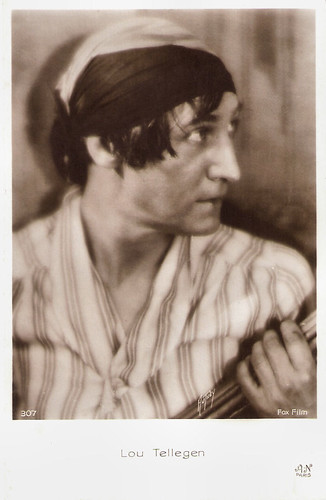
Lou Tellegen. French postcard by A.N., Paris, no. 307. Photo: Max Munn Autrey / Fox Film.

Buck Jones. French postcard, no. 5031. Photo: Max Munn Autrey / Fox.
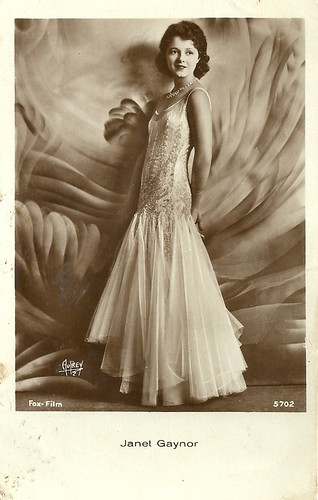
Janet Gaynor. Austrian postcard by Iris-Verlag, no. 5702. Photo Max Munn Autrey / Fox Film.

Charles Farrell. Austrian postcard by Iris-Verlag, no. 5889. Photo: Max Munn Autrey / Fox.
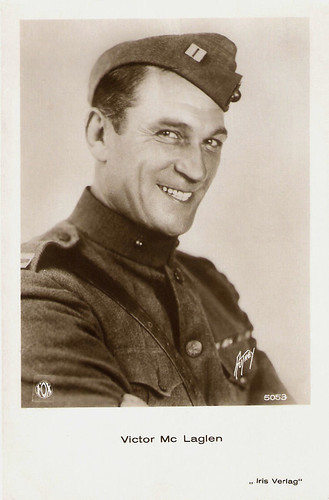
Victor McLaglen in What Price Glory? (1926). Austrian postcard by Iris Verlag, no. 5053. Photo: Max Munn Autrey / Fox. Publicity still for What Price Glory? (Raoul Walsh, 1926).
Max Autrey employed a sharp focus, high-contrast style, inscribing his name into the negative. Fox stars soon appeared as radiant and ravishing as those at the more luxurious studios, posing as Jazz Age cuties, holiday belles, and, like actor George O’Brien, almost nude camera studies.
One of the best known stars photographed by Max Autrey for Fox is Clara Bow. He photographed her for her early sound film Call Her Savage (John Francis Dillon, 1932). David Atfield at IMDb: “What a film! Daring to tackle issues few films would even look at today. Stunningly photographed and directed, and with greater style than many early talkies.”
Bow was known as the ‘It’ girl. Cathy Curtis in the L.A. Times: “’It’ of course, really meant ‘sex’, and, even in the demure bathing suit of the time, Bow's exuberant, upraised-arm stance in swirling surf gave her an air of ready-for-anything sauciness.”
In 1932, Autrey established his own portrait studio on the side, where he worked part-time. Many Fox stars and other film people continued coming to him for portraits and special work at the 7075 Sunset Blvd. location.
Autrey’s best known later works are his stills for Chaplin’s Modern Times (Charles Chaplin, 1936). During the same time, his wife, Bonnie, began breeding and selling Irish setters out of their home, dogs which won many awards at competitions.
As time passed, Autrey turned his attention to shooting society portraits, while occasionally making star headshots, which he entered in the Academy of Motion Picture Arts and Sciences Still Show.
During World War II, he shot photographs of soldiers on leave. While Autrey and many of his peers like Fred Hartsook, Albert Witzel, Nelson Evans, and Melbourne Spurr helped devise and establish the field of glamour photography in the 1910s and 1920s, they were all virtually forgotten by the 1950s and 1960s. In 1967, Autrey closed his studio and retired.
Max Munn Autrey died in 1971 in Los Angeles, California at the age of 80, with little notice taken in local newspapers. In 1996, his photos were hanging alongside master photographer George Hurrell’s in the exhibition Still Men: The Glamour Photography of Max Munn Autrey and George Hurrell, 1920-1940 at the Laguna Beach Museum. It was the start of the rediscovery of one of the major pioneers of Hollywood glamour photography.
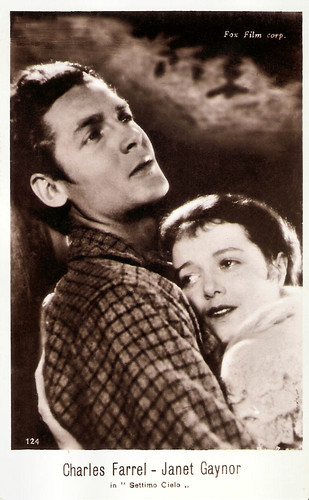
Janet Gaynor and Charles Farrell in Seventh Heaven (1927). Italian postcard offered by Cioccolata Lurati, no. 124. Photo: Max Munn Autrey / Fox. Publicity still for Seventh Heaven (Frank Borzage, 1927).

Janet Gaynor and Charles Morton in 4 Devils (1928). Italian postcard by G.B. Falci Editore, Milano, no. 720. Photo: Max Munn Autrey / Fox. Publicity still for 4 Devils (Friedrich Wilhelm Murnau, 1928).
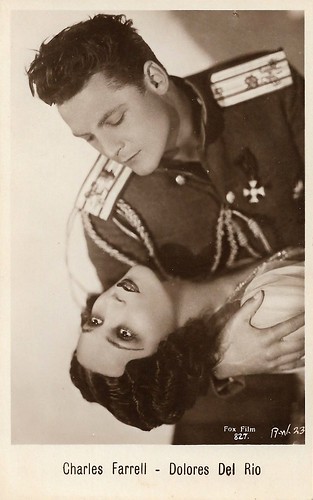
Charles Farrell and Dolores del Rio in The Red Dance (1928). Italian postcard by G.B. Falci, Milano, no. 827. Photo: Max Munn Autrey / Fox Film. Publicity still for The Red Dance (Raoul Walsh, 1928).
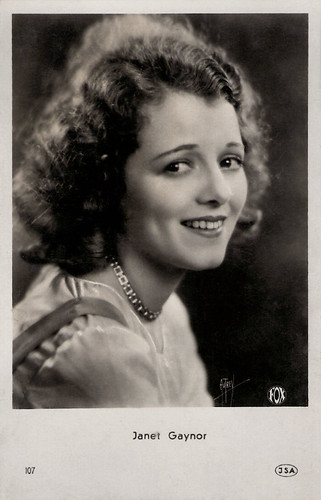
Janet Gaynor. Dutch postcard by J.S.A., no 107. Photo: Max Munn Autrey / Fox.
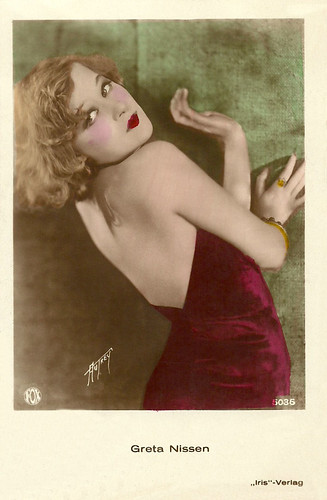
Greta Nissen. Austrian postcard by Iris-Verlag, no. 5035. Photo: Max Munn Autrey / Fox.
Sources: Larry Harnish / Mary Mallory (The Daily Mirror), Cathy Curtis (LA Times), David Atfield (IMSb), Vintage Movie Star Photos, and IMDb.

Victor McLaglen. French postcard by J.R.P.R., Paris, no. 332. Photo: Max Munn Autrey / Fox. Publicity still for What Price Glory? (Raoul Walsh, 1926).

Janet Gaynor, Nancy Drexel, Barry Norton and Charles Morton in 4 Devils (1928). Italian postcard by G.B. Falci Editore, Milano, no. 708. Photo: Max Munn Autrey / Fox. Publicity still for 4 Devils (Friedrich Wilhelm Murnau, 1928).

Greta Nissen. German postcard by Ross Verlag, no. 3081/1, 1928-1929. Photo: Max Munn Autrey / Fox.

Dolores del Rio in The Red Dance (1928). German postcard by Ross Verlag, no. 3905/2, 1928-1929. Photo: Max Munn Autrey / Fox. Publicity still for The Red Dance (Raoul Walsh, 1928). Del Rio is wearing a kokoshnik (Russian: коко́шник; IPA: [kɐˈkoʂnʲɪk]), a traditional Russian head-dress worn by women and girls.

George O'Brien. French postcard by A.N., Paris, no. 315. Photo: Max Munn Autrey / Fox Film. Collection: Didier Hanson.
Mystique and sensuousness
Max Munn Autrey was born in 1891 in Dallas, Texas, USA.
He was trained as a painter, but as an adult, Autrey moved around the state taking photographs. He was employed by P.T. Collier & Son in Dallas, per his World War I registration papers.
In 1918, he married his wife, Bonnie, in her hometown of Tyler. They lived in Burleson in 1920, but soon decided to move to California.
In 1922, the great Hollywood photographer Albert Witzel needed a steady hand to help produce the many portraits turned out by his studio, occasioned by the departure of his head photographer Walter Frederick Seely to establish his own studio.
Autrey’s artistry impressed the portraitist, renowned for producing high-quality, striking images. Autrey found his niche in portraiture, helping devise mystique and sensuousness in star portraits. Clients loved the lush look of his portraits and seated compositions.
Industry enthusiasm for Autrey’s work was so great that Witzel established a branch studio in Hollywood, run by Autrey from 1922 to 1925. Pictures and Picture Goer called Autrey “a master photographer” in an August 1925 article, stating that he produced most of the Witzel Studios portraits and earned that position only two months after joining the studio.
The Fox Film Corporation quickly seized upon Autrey and his talents, signing him to an exclusive contract late in the year. His first assignment as a still photographer for Fox was the drama Hell's Four Hundred (John Griffith Wray, 1926) starring Margaret Livingston.
Soon followed more prestigious assignments like What Price Glory? (Raoul Walsh, 1926), 7th Heaven (Frank Borzage, 1927) with Charles Farrell and Janet Gaynor, and Street Angel (Frank Borzage, 1928). Autrey became noted for his glamorous style.
For director Friedrich Wilhelm Murnau he did the stills for Sunrise (Friedrich Wilhelm Murnau, 1927) starring George O'Brien and Janet Gaynor, and the lost masterpiece Four Devils (1928). Later followed Dressed to Kill (1928) with Mary Astor.
Autrey portrayed many film stars. He photographed Madge Bellamy coyly poised on tiptoe for The Play Girl (Arthur Rosson, 1928) and portrayed Dolores del Rio as an exotic Russian dancer for The Red Dance (Raoul Walsh, 1928).

Lou Tellegen. French postcard by A.N., Paris, no. 307. Photo: Max Munn Autrey / Fox Film.

Buck Jones. French postcard, no. 5031. Photo: Max Munn Autrey / Fox.

Janet Gaynor. Austrian postcard by Iris-Verlag, no. 5702. Photo Max Munn Autrey / Fox Film.

Charles Farrell. Austrian postcard by Iris-Verlag, no. 5889. Photo: Max Munn Autrey / Fox.

Victor McLaglen in What Price Glory? (1926). Austrian postcard by Iris Verlag, no. 5053. Photo: Max Munn Autrey / Fox. Publicity still for What Price Glory? (Raoul Walsh, 1926).
A sharp focus, high-contrast style
Max Autrey employed a sharp focus, high-contrast style, inscribing his name into the negative. Fox stars soon appeared as radiant and ravishing as those at the more luxurious studios, posing as Jazz Age cuties, holiday belles, and, like actor George O’Brien, almost nude camera studies.
One of the best known stars photographed by Max Autrey for Fox is Clara Bow. He photographed her for her early sound film Call Her Savage (John Francis Dillon, 1932). David Atfield at IMDb: “What a film! Daring to tackle issues few films would even look at today. Stunningly photographed and directed, and with greater style than many early talkies.”
Bow was known as the ‘It’ girl. Cathy Curtis in the L.A. Times: “’It’ of course, really meant ‘sex’, and, even in the demure bathing suit of the time, Bow's exuberant, upraised-arm stance in swirling surf gave her an air of ready-for-anything sauciness.”
In 1932, Autrey established his own portrait studio on the side, where he worked part-time. Many Fox stars and other film people continued coming to him for portraits and special work at the 7075 Sunset Blvd. location.
Autrey’s best known later works are his stills for Chaplin’s Modern Times (Charles Chaplin, 1936). During the same time, his wife, Bonnie, began breeding and selling Irish setters out of their home, dogs which won many awards at competitions.
As time passed, Autrey turned his attention to shooting society portraits, while occasionally making star headshots, which he entered in the Academy of Motion Picture Arts and Sciences Still Show.
During World War II, he shot photographs of soldiers on leave. While Autrey and many of his peers like Fred Hartsook, Albert Witzel, Nelson Evans, and Melbourne Spurr helped devise and establish the field of glamour photography in the 1910s and 1920s, they were all virtually forgotten by the 1950s and 1960s. In 1967, Autrey closed his studio and retired.
Max Munn Autrey died in 1971 in Los Angeles, California at the age of 80, with little notice taken in local newspapers. In 1996, his photos were hanging alongside master photographer George Hurrell’s in the exhibition Still Men: The Glamour Photography of Max Munn Autrey and George Hurrell, 1920-1940 at the Laguna Beach Museum. It was the start of the rediscovery of one of the major pioneers of Hollywood glamour photography.

Janet Gaynor and Charles Farrell in Seventh Heaven (1927). Italian postcard offered by Cioccolata Lurati, no. 124. Photo: Max Munn Autrey / Fox. Publicity still for Seventh Heaven (Frank Borzage, 1927).

Janet Gaynor and Charles Morton in 4 Devils (1928). Italian postcard by G.B. Falci Editore, Milano, no. 720. Photo: Max Munn Autrey / Fox. Publicity still for 4 Devils (Friedrich Wilhelm Murnau, 1928).

Charles Farrell and Dolores del Rio in The Red Dance (1928). Italian postcard by G.B. Falci, Milano, no. 827. Photo: Max Munn Autrey / Fox Film. Publicity still for The Red Dance (Raoul Walsh, 1928).

Janet Gaynor. Dutch postcard by J.S.A., no 107. Photo: Max Munn Autrey / Fox.

Greta Nissen. Austrian postcard by Iris-Verlag, no. 5035. Photo: Max Munn Autrey / Fox.
Sources: Larry Harnish / Mary Mallory (The Daily Mirror), Cathy Curtis (LA Times), David Atfield (IMSb), Vintage Movie Star Photos, and IMDb.
No comments:
Post a Comment